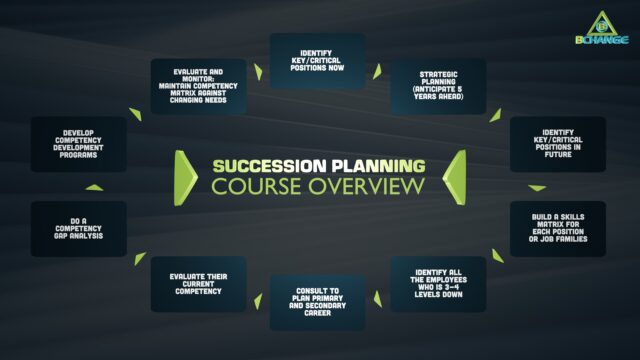
The Importance of Succession Planning: Securing the Future of Your Business
The Importance of Succession Planning:
Securing the Future of Your Business
In the dynamic world of business, change is the only constant. One of the most critical, yet often overlooked, aspects of managing a successful organization is succession planning. It’s a strategy that ensures your business can continue to thrive even when key leaders or employees move on. Let’s explore why succession planning is essential, the steps involved, and the benefits it offers to businesses of all size
What is Succession Planning? Succession planning is a proactive process where an organization identifies and develops potential future leaders from within the company. This ensures that when a key position becomes vacant, there is already a capable and prepared individual ready to step in. Succession planning goes beyond merely filling positions; it’s about preparing the organization for future growth and ensuring continuity in leadership and operations.
Why is Succession Planning Important?
- Continuity and Stability: In the event of sudden departures due to retirement, resignation, or unforeseen circumstances, having a succession plan in place ensures that the business continues to operate smoothly without major disruptions.
- Retention of Institutional Knowledge: Long-term employees possess valuable knowledge and skills that are crucial to the organization. Succession planning helps preserve this knowledge by ensuring it is passed down to future leaders.
- Employee Development and Engagement: When employees know there are opportunities for advancement, they are more likely to stay engaged and committed to the organization. Succession planning motivates employees to develop their skills and prepare for future roles.
- Strategic Alignment: Succession planning aligns with the company’s long-term goals. By preparing leaders who understand the organization’s vision and values, the company can maintain its strategic direction even through transitions.
Steps in Succession Planning
- Identify Key Positions: Determine which roles are critical to the organization’s success. These are typically senior management positions, but can also include other vital roles that are crucial to operations.
- Assess Current Talent: Evaluate the skills, performance, and potential of current employees. Identify individuals who have the capability and desire to take on greater responsibilities in the future.
- Develop Talent: Provide training, mentoring, and development opportunities to prepare identified individuals for future roles. This might include leadership training, cross-departmental projects, and stretch assignments.
- Create Succession Plans: For each key position, develop a plan that outlines the steps to be taken when a transition is needed. This plan should include potential successors, the training they will need, and a timeline for their development.
- Review and Update Regularly: Succession planning is not a one-time task. Regularly review and update the plan to reflect changes in the organization and the development progress of potential successors.
Benefits of Succession Planning
- Risk Management: Reduces the risk associated with the sudden loss of key employees, ensuring the business can continue without major disruptions.
- Cost Efficiency: Internal promotions are often more cost-effective than hiring external candidates. Existing employees require less time to get up to speed and are already familiar with the company culture.
- Employee Morale: Demonstrates to employees that the organization values their development and is committed to their career growth, which can boost morale and reduce turnover.
- Strategic Advantage: Having a pipeline of ready leaders gives the organization a competitive edge, allowing it to respond swiftly to changes and seize new opportunities.
Conclusion Succession planning is an essential strategy for any organization that wants to ensure its longevity and success. By identifying and developing future leaders, businesses can maintain continuity, retain valuable knowledge, and keep employees engaged. As the business landscape continues to evolve, having a robust succession plan in place is not just a good practice; it’s a critical component of a resilient and future-proof organization. Investing in succession planning today means securing the future of your business for tomorrow.

Recent Comments